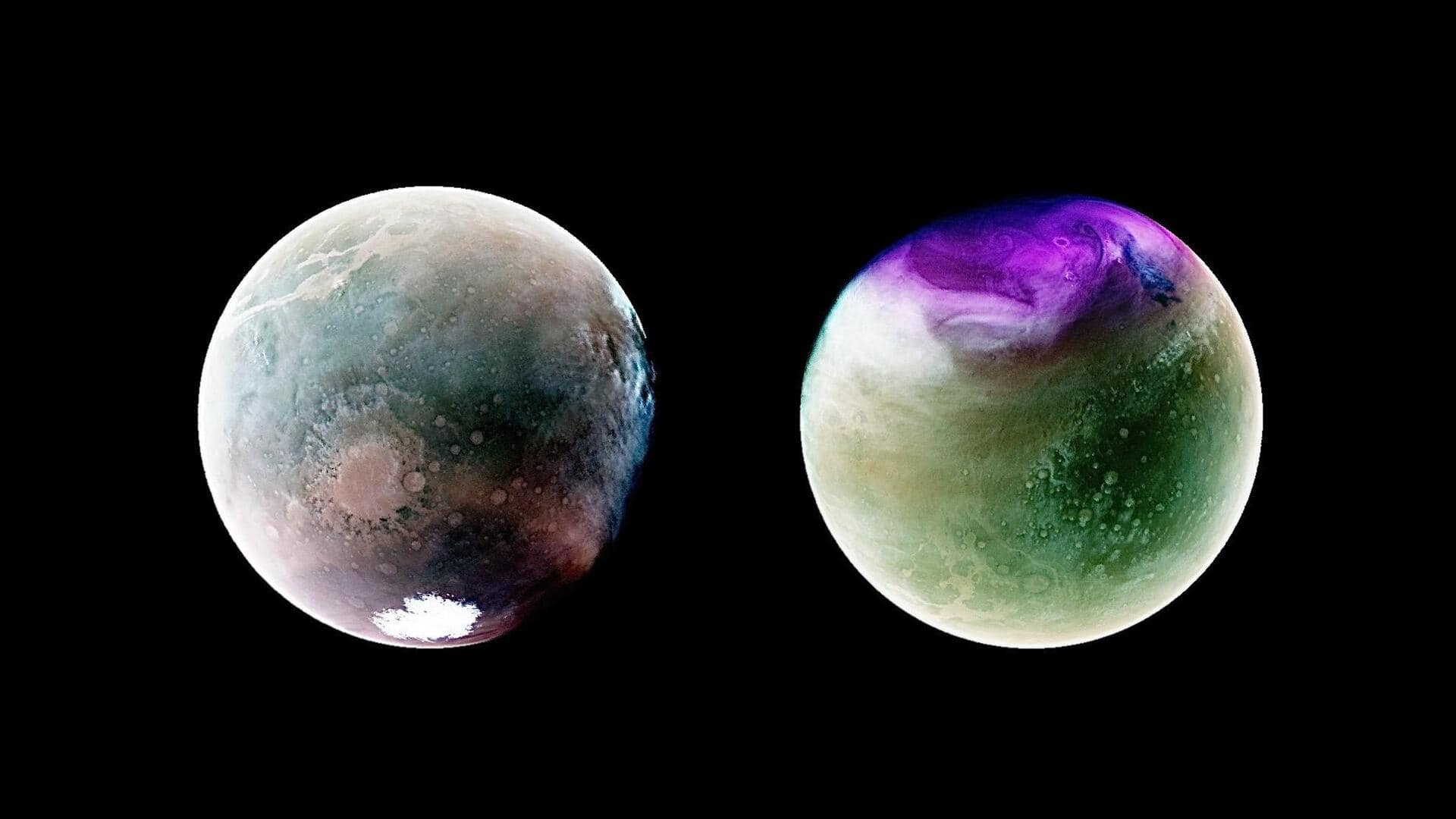
NASA's MAVEN mission snaps stunning ultraviolet images of Mars
What's the story
NASA has released two images of Mars captured by MAVEN (Mars Atmosphere and Volatile EvolutioN) spacecraft in ultraviolet wavelengths. Viewing Mars in these wavelengths helps scientists better understand what the atmosphere on the Red Planet looks like and provides information about its surface. The images show Mars at different points in its orbit around the Sun.
Context
Why does this story matter?
To find out if Mars is habitable or not, one of the crucial components scientists have to study is the planet's atmosphere. That is exactly what MAVEN is equipped to do. The mission is designed to explore the planet's upper atmosphere, ionosphere, and how it interacts with the Sun and solar wind. MAVEN will mark a decade of operations in September 2024.
Processing
Purple patches depict atmospheric ozone on the Red Planet
The images, originally taken in ultraviolet wavelengths, have been color adjusted so they are visible to the human eye. Mars's surface is seen in either tan or green in the pictures, depending on how the image processing was done. The purple blotches depict atmospheric ozone on the Red Planet while clouds and hazes are shown in shades of white or blue.
First image
Summer season on Mars's souther hemisphere has also been captured
This picture shows the southern hemisphere of Mars as it experiences summer—when the planet moves close to the Sun. Similar to why we experience seasons on Earth, the seasons on Mars are also a result of the planet's tilt. Visible in white at the bottom is the "southern polar ice cap," which appears to be melting due to the summer heat.
Features
One of Mars's deepest craters lies at the bottom left
A couple of other interesting features are seen in the 'summer' image of Mars. One of the deepest craters on Mars, called Argyre Basin, which ranges over 1,200km wide, is seen at the bottom left corner. The crater is filled with atmospheric haze, shown in shades of pale pink. At the top left, depicted in tan, lies a vast canyon system, called Valles Marineris.
Second image
The atmospheric ozone on Mars is shown in magenta
In the other image, Mars's northern hemisphere is seen as the planet crossed the farthest point in its orbit from the Sun. The bright magenta region shows the atmospheric ozone on Mars and thick clouds, shown in white, are seen at the northern polar region. The Valles Marineris canyons are visible in the image as well, in shades of tan at the lower left.